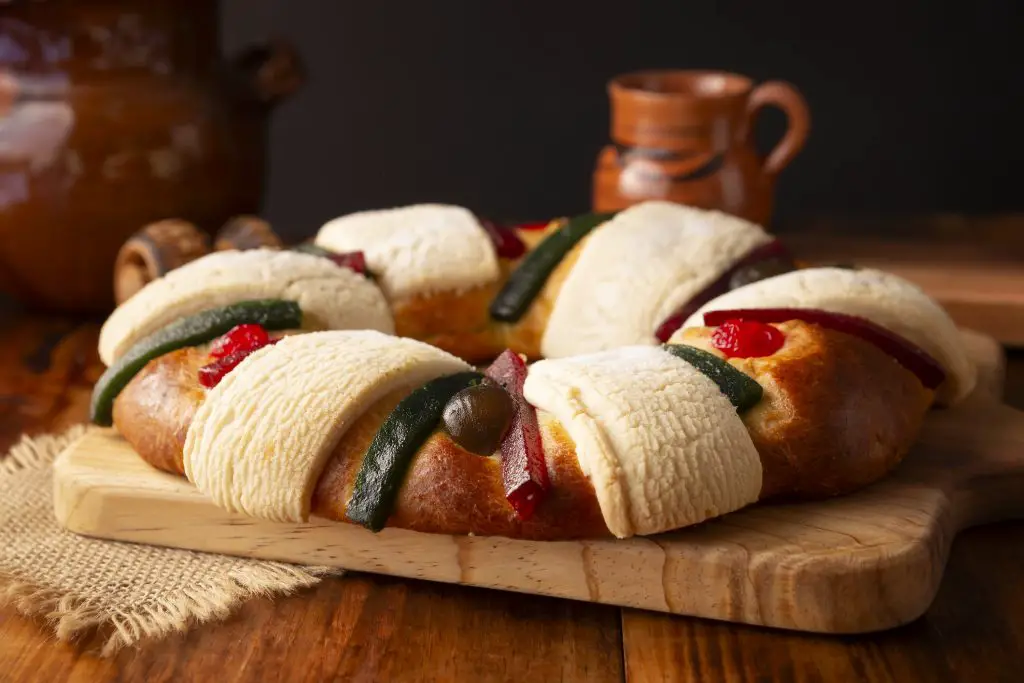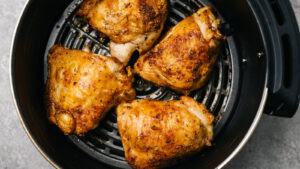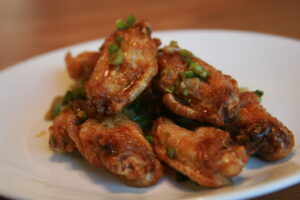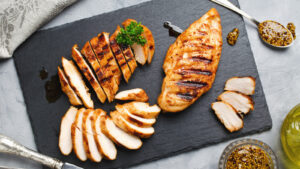Rosca de Reyes, also known as the Kings’ Ring or Three Kings’ Bread, is a delightful and meaningful tradition enjoyed by many during the celebration of Three Kings’ Day, also known as Epiphany. This festive and flavorful bread is a beloved treat in Latin American and Spanish-speaking countries, marking the culmination of the holiday season and commemorating the visit of the Three Wise Men to the baby Jesus. In this article, we will explore the history and significance of Rosca de Reyes and provide you with a step-by-step guide to making this delicious and symbolic dessert at home.
The History of Rosca de Reyes
The origins of Rosca de Reyes can be traced back to medieval Europe, specifically to the celebration of Epiphany, which commemorates the visit of the Three Wise Men or Magi to the baby Jesus in Bethlehem. In Spain, it became customary to celebrate this event with a special cake known as “Roscón de Reyes” or “Kings’ Ring,” which was often adorned with dried fruits and candied citrus peels to symbolize the jewels in the Magi’s crowns.
When the tradition of Rosca de Reyes was brought to the Americas by Spanish colonizers, it underwent some regional adaptations and variations, resulting in the diverse and unique recipes we find today. While the basic concept of a sweet, ring-shaped bread remains consistent, different countries and regions have added their own distinctive twists and fillings to create a rich tapestry of flavors.
The Significance of Rosca de Reyes
Rosca de Reyes is not just a delicious dessert; it holds deep cultural and religious significance for those who celebrate Three Kings’ Day. The round shape of the bread represents the circular path the Three Wise Men took to avoid King Herod on their journey to find the baby Jesus. It also symbolizes unity, as the bread is meant to be shared among family and friends.
Inside the Rosca, small figurines or “muñequitos” are hidden. These figurines represent the baby Jesus, and sometimes, other characters such as the Three Wise Men or animals. Finding the figurine in your slice of Rosca is considered a sign of good luck and a special responsibility – the person who finds it is expected to host a gathering or prepare tamales for the feast of Candlemas on February 2nd.
Additionally, small coins and dried fruits are often added to the Rosca, symbolizing the wealth and gifts brought by the Three Wise Men to the baby Jesus. These elements add a sense of excitement and surprise to the tradition, as each person eagerly anticipates finding a figurine or coin in their slice.
Ingredients for Rosca de Reyes
Before you embark on making your own Rosca de Reyes, you’ll need to gather the necessary ingredients. This recipe yields a delicious and traditional Rosca that serves approximately 10-12 people.
For the Dough:
4 cups all-purpose flour
1/2 cup granulated sugar
1/2 cup unsalted butter, softened
1/4 cup warm milk
1/4 cup warm water
3 1/2 tsp active dry yeast
4 large eggs
1 tsp vanilla extract
Zest of 1 orange
Zest of 1 lemon
1/2 tsp salt
For the Decoration:
Candied fruits (cherries, figs, citron) for garnish
Sliced almonds for garnish
1 egg yolk, beaten (for egg wash)
Optional: figurines, small coins, and dried fruits for hiding in the Rosca
For the Glaze:
1/2 cup powdered sugar
1 tbsp milk
1/2 tsp vanilla extract
Now that you have all the ingredients ready, let’s dive into the step-by-step instructions for making Rosca de Reyes.
Instructions
Proof the Yeast:
In a small bowl, combine the warm milk, warm water, and 1 tablespoon of sugar. Sprinkle the yeast over the mixture and let it sit for about 10 minutes until it becomes frothy.
Prepare the Dough:
In a large mixing bowl, combine the softened butter, remaining sugar, and salt. Mix until the mixture is smooth and creamy. Add the eggs one at a time, mixing well after each addition. Stir in the vanilla extract, orange zest, and lemon zest.
Combine Dry and Wet Ingredients:
Gradually add the yeast mixture to the wet ingredients while stirring continuously. Slowly incorporate the flour, one cup at a time, until a soft dough forms.
Knead the Dough:
Turn the dough out onto a lightly floured surface and knead it for about 10-15 minutes until it becomes smooth and elastic. If the dough is too sticky, you can add a little more flour as needed.
Shape the Rosca:
Form the dough into a large, smooth ball and place it in a greased bowl. Cover it with a clean kitchen towel or plastic wrap and let it rise in a warm, draft-free place for about 1 to 1.5 hours, or until it doubles in size.
Preheat the Oven:
While the dough is rising, preheat your oven to 350°F (175°C) and line a baking sheet with parchment paper.
Decorate the Rosca:
Once the dough has risen, punch it down to release any air bubbles. Divide the dough into two equal portions. Take one portion and shape it into a long rope. Form it into a ring on the prepared baking sheet, pinching the ends together to create a circle. Repeat with the second portion, placing it on top of the first to form a larger circle.
Add the Figurines and Coins:
If desired, hide small figurines, coins, and dried fruits inside the Rosca by gently pushing them into the dough. Be sure to distribute them evenly throughout the bread.
Egg Wash and Decorations:
Brush the top of the Rosca with the beaten egg yolk. Decorate the bread with candied fruits and sliced almonds, pressing them gently into the dough. These fruits and almonds not only add flavor but also give the Rosca a festive appearance.
Bake:
Place the Rosca de Reyes in the preheated oven and bake for 30-35 minutes, or until it turns golden brown and sounds hollow when tapped on the bottom. Be sure to rotate the baking sheet halfway through for even baking.
Glaze:
While the Rosca is baking, prepare the glaze. In a small bowl, whisk together the powdered sugar, milk, and vanilla extract until you achieve a smooth glaze.
Once the Rosca is out of the oven, let it cool on a wire rack for a few minutes. While it’s still warm, drizzle the glaze over the top, allowing it to drip down the sides. The glaze adds a sweet finishing touch and helps the candied fruits and almonds adhere.
Serving the Rosca:
Slice the Rosca de Reyes and serve it with a cup of hot chocolate, atole, or coffee. Remember that the person who finds the figurine in their slice is responsible for hosting the Candlemas celebration on February 2nd.
Rosca de Reyes is more than just a delicious dessert; it’s a meaningful tradition that brings families and communities together to celebrate the journey of the Three Wise Men and the joy of giving. By making your own Rosca at home, you not only create a delectable treat but also participate in a centuries-old tradition that connects people across cultures and generations.
So, whether you’re celebrating Three Kings’ Day for religious reasons or simply enjoying the cultural richness it offers, the Rosca de Reyes is a delightful way to honor this special occasion. Share this sweet and symbolic bread with your loved ones and embrace the spirit of unity, tradition, and generosity that it represents.
Variations and Regional Influences
As mentioned earlier, Rosca de Reyes has evolved over time and across regions, resulting in a wide array of variations and regional influences. While the basic concept remains consistent, the ingredients, shapes, and sizes can differ significantly. Here are a few notable variations:
Fillings: In some regions, the Rosca is filled with sweet ingredients such as cream, chocolate, or fruit preserves, adding an extra layer of flavor and richness. These fillings are often hidden inside the dough, creating a delightful surprise for those who discover them.
Shapes and Sizes: While the traditional round shape is the most common, you can find Roscas in various shapes and sizes. In Mexico, for instance, it’s not uncommon to come across smaller, individual-sized Roscas that are perfect for personal servings. In Spain, Roscón de Reyes often takes on a larger, more elaborate form, adorned with a wide variety of candied fruits and nuts.
Regional Flavors: Different regions have their own unique flavors and additions to the Rosca. For instance, in Mexico, orange blossom water or orange zest is commonly used to flavor the dough, giving it a distinct citrusy aroma. In Catalonia, Spain, you may find Roscón de Reyes with a hint of anise flavoring.
Decorations: While candied fruits and almonds are the most common decorations, some regions incorporate additional elements. In some Mexican Roscas, you might find dried hibiscus flowers, while in Spain, figurines of the Three Wise Men are often placed on top as decorations.
Accompaniments: Rosca de Reyes is typically enjoyed with a warm beverage like hot chocolate, atole, or café de olla. These drinks complement the sweet and slightly doughy taste of the bread, making for a perfect pairing.
Cultural Traditions
Beyond the delicious taste and symbolic elements, the act of sharing Rosca de Reyes with loved ones and the associated customs are an integral part of the celebration. Here are some cultural traditions associated with Rosca de Reyes:
The Cutting of the Rosca: Family and friends gather around the Rosca, eagerly awaiting the moment when it is sliced and served. Each person takes a turn to cut a slice, hoping to find one of the hidden figurines or coins. The atmosphere is filled with excitement as people bite into their slices, anticipating their discovery.
The Lucky Finder: The person who discovers a figurine in their slice is traditionally deemed responsible for hosting the Candlemas celebration on February 2nd, also known as Dia de la Candelaria. This celebration often involves making tamales and inviting friends and family to share in the festivities.
Sharing and Unity: Rosca de Reyes embodies the spirit of sharing and unity. It is common for families, friends, and even co-workers to come together and enjoy a Rosca. The act of breaking bread and sharing a meal reinforces the sense of togetherness and community.
Religious Observance: For those who observe Three Kings’ Day for religious reasons, Rosca de Reyes holds a profound significance. It is a way to remember the journey of the Three Wise Men and the revelation of Jesus as the Savior to the world. Many attend special church services and participate in prayerful activities as part of the celebration.




